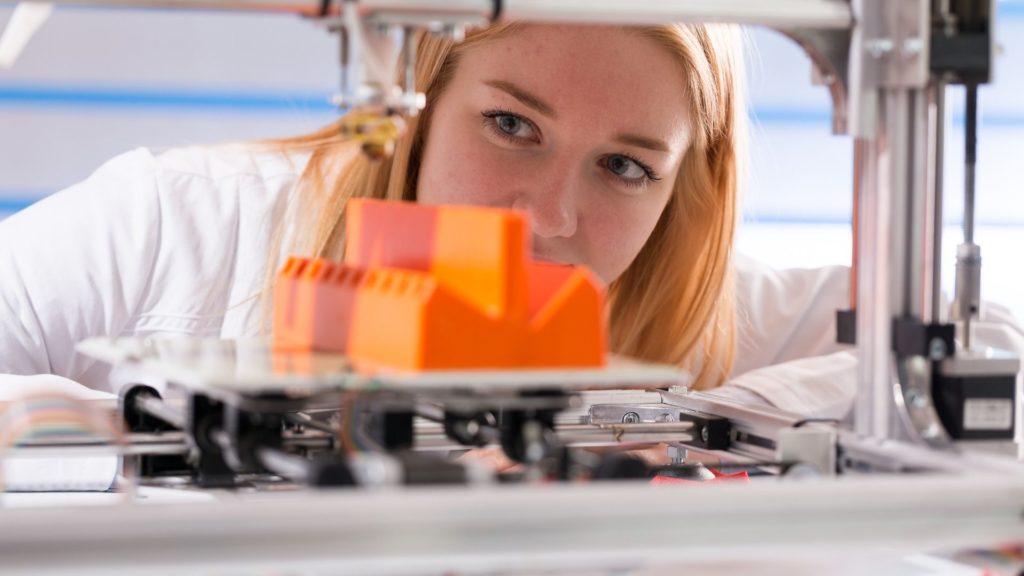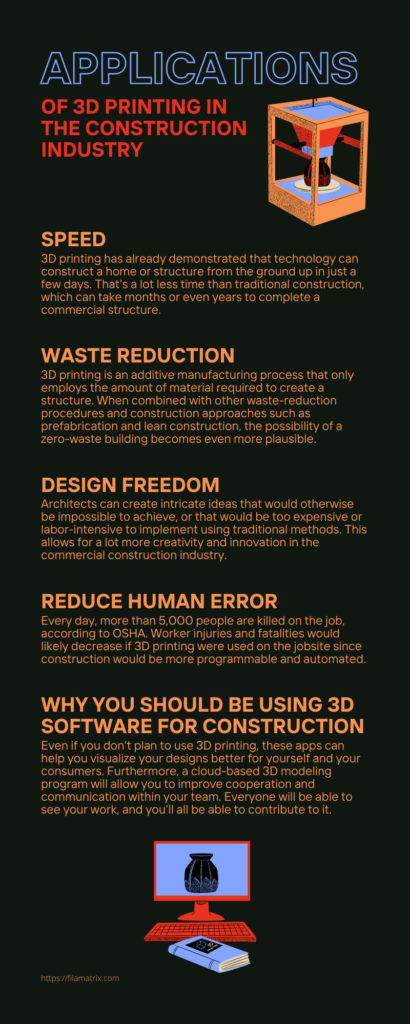
A Look at the Different Densities of 3D Printing Materials
There’s so much to learn about 3D printing materials. Come and find out what to look for when examining the different densities of 3D printing filaments.
844-810-1385

Over the last decade, 3D printing has become a popular buzzword—and with good reason. 3D printing technology has improved to the point where it is now an important participant in a range of industries, despite its origins as a tool for product prototypes. While 3D printing has certainly proved advantageous in the medical, aeronautical, and tool-making industries since its debut, there is one other profession that may be set to break out: construction.
The technology could help transform construction as we know it, with 3D printers already capable of producing building walls and processing cement. But as a technology, does 3D printing in building have any staying power as a long-term solution or is it just a passing fad? In this article, we’ll cover the history of 3D printing in construction, as well as its growth and benefits. Here are some of the most notable applications of 3D printing in the construction industry.
Before we go into the history of 3D printing in the construction business, it’s vital to go back to the beginnings of the technology.
Stereolithography, or SLA, was invented in the mid-1980s, and here is where 3D printing got its start. SLA converts a liquid resin into a solid substance using a high-powered laser. SLA is an additive technique, which means it’s a method for building a product layer by layer from the ground up. SLA is still one of the most popular 3D printing technologies today, while any technology that generates parts in an additive manner is called 3D printing.
Selective laser sintering (SLS), fused deposition modeling (FDM), and direct metal deposition are among other popular additive methods (DMD). Initially, 3D printing was used to create prototype items swiftly and precisely. However, as additive techniques advanced, the range of possible applications grew. Prior to the use of building information modeling (BIM), architectural firms employed 3D printing to create scale models. It wasn’t long before it was used for more ambitious building projects.
One type of building project that you can use 3D printing for is making concrete. In fact, by 2021, the 3D concrete printing market is expected to be worth $56.4 million, owing to the number of new, creative projects planned in the construction industry. Many significant construction firms appear to be endorsing these marketplaces, indicating that 3D printing in concrete isn’t merely a grassroots movement. Though 3D printing concrete has a lot of potential, it’s important to remember that the overall technology for concrete is still in its infancy. In fact, most concrete-processing 3D printers are still being tested and refined today and aren’t yet ready for production. As technology advances, however, we will be able to additively create anything from foundations to walls to individual cinder blocks to bridges in a faster, more inexpensive, and environmentally responsible manner.
Why is 3D printing causing such a stir in the building industry? Companies are seeking new solutions to help fill the gaps as the industry confronts increased pressure to fulfill tight timetables and budgets. In the construction industry, 3D printing has the potential to increase efficiency in a variety of ways, including the ones listed below.
3D printing has already demonstrated that technology can construct a home or structure from the ground up in just a few days. That’s a lot less time than traditional construction, which can take months or even years to complete a commercial structure.
According to most estimates, global building waste now exceeds one billion tons per year. While 3D printing will not be able to alleviate all the difficulties associated with construction debris, it can help. This is because 3D printing is an additive manufacturing process that only employs the amount of material required to create a structure. When combined with other waste-reduction procedures and construction approaches such as prefabrication and lean construction, the possibility of a zero-waste building becomes even more plausible.
One of the most appealing aspects of 3D printing is the design flexibility it provides. Architects can create intricate ideas that would otherwise be impossible to achieve, or that would be too expensive or labor-intensive to implement using traditional methods. This allows for a lot more creativity and innovation in the commercial construction industry.
Every day, more than 5,000 people are killed on the job, according to OSHA. Worker injuries and fatalities would likely decrease if 3D printing were used on the jobsite since construction would be more programmable and automated.
The benefits of 3D printing begin with the selection of the appropriate 3D software. Finding the correct architectural software can be difficult. Luckily, there are numerous applications specific to architecture that provide excellent tools. What makes these programs so beneficial? Even if you don’t plan to use 3D printing, these apps can help you visualize your designs better for yourself and your consumers. Furthermore, a cloud-based 3D modeling program will allow you to improve cooperation and communication within your team. Everyone will be able to see your work, and you’ll all be able to contribute to it.
After reading more about the applications of 3D printing in the construction industry, you’ll likely agree with us that 3D printing has far too much promise to be overlooked. While the industry may never exclusively use 3D printing, it is only a matter of time until it is enhanced and advanced greatly. Overall, 3D printing is positioned to be a feasible solution for the future of our building, with significant cost savings and environmental benefits. If you are looking to purchase any type of filament to help in your construction project, whether you want to buy PETG filament or nylon filament, be sure to stop by Filamatrix. We have an amazing selection of most common types of filaments to ensure that we are your one-stop shop for all your 3D printing projects!


There’s so much to learn about 3D printing materials. Come and find out what to look for when examining the different densities of 3D printing filaments.

Those interested in 3D printing have a lot to learn on how to use the system properly. Find out what you need to know about 3D printing and humidity levels.

3D printing has many variables that both beginners and experts need to know. Find out what effects temperature has on 3D printer filament.
Get professional insights, industry news, and our latest deals